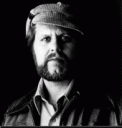 It’s the Winter Solstice. Ancient Celtic mummery is tedious — woo, I am teh Morrigan! — but that shouldn’t distract you from the fact that Newgrange is one of the wonders of the world, and never more than at this time of year. Here’s a reprint of an old post of mine about it.
It’s the Winter Solstice. Ancient Celtic mummery is tedious — woo, I am teh Morrigan! — but that shouldn’t distract you from the fact that Newgrange is one of the wonders of the world, and never more than at this time of year. Here’s a reprint of an old post of mine about it.
Newgrange is a megalithic tomb in County Meath’s Boyne Valley, in Ireland. It is more than five thousand years old. Built around 3200BC, it is five hundred years older than the Great Pyramid of Giza and about a thousand years older than Stonehenge. When it was rediscovered in 1699, it looked like an ordinary hill. It was properly excavated beginning in 1962, when archaeologists thought it was a particularly fine example of a passage grave, but nothing more. Then, Prof. M.J. O’Kelly of U.C.C. discovered the roof box, a small opening in the hill above the passage entrance, which led to a shaft that ran to the chamber at the center of the tomb. He had an idea about what it might be for. On the morning of December 21st 1967, O’Kelly sat in the central chamber and, as the sun came up, saw the first rays of the rising sun run down the shaft and strike the floor of the chamber.
Newgrange is a clock. The shaft leading out to the roof box is precisely aligned so that on the morning of the Winter Solstice the first light of day will run directly into the middle of the tomb. Or, at least, it was precisely so aligned. It is so old that changes in the Earth’s orbit have affected its operation. When it was built, the sun would have struck the back wall of the chamber, rather than the floor, and the light would have remained in the chamber for about four minutes longer than it does now. It was very accurate. The people who built Newgrange knew what they were doing.
 A society — a civilization, if you like — is a hard thing to hold together. If you live in an agrarian society, as the overwhelming majority of people did until about two hundred years ago, and you are on the western edge of Europe, few times are harder than the dead of Winter. The days are at their shortest, the sun is far away, and the Malthusian edge, in Brad DeLong’s phrase, is right in front of you. It’s no wonder so many religious festivals take place around the solstice. Here were a people, more than five millennia ago, able not only to pull through the Winter successfully, but able also to build a huge timepiece to remind themselves that they were going to make it. It’s astonishing.
A society — a civilization, if you like — is a hard thing to hold together. If you live in an agrarian society, as the overwhelming majority of people did until about two hundred years ago, and you are on the western edge of Europe, few times are harder than the dead of Winter. The days are at their shortest, the sun is far away, and the Malthusian edge, in Brad DeLong’s phrase, is right in front of you. It’s no wonder so many religious festivals take place around the solstice. Here were a people, more than five millennia ago, able not only to pull through the Winter successfully, but able also to build a huge timepiece to remind themselves that they were going to make it. It’s astonishing.


